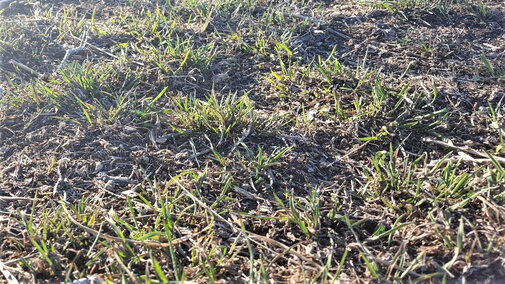Just a month after double-digit below zero temperatures, the Nebraska Panhandle reached a high of 70°F on Thursday, February 16.
This current spell of warm weather isn’t too unusual in the High Plains as February and March normally see their share of high and low temperatures. In most years you can almost count on having a couple weeks in mid to late winter when temperatures rise from a “normal” high in the 30s or 40s to a high approaching the 60s, or as we saw this past week, the 70s. If you are a farmer, rancher, or landowner who normally battles downy brome (also known as cheatgrass), now is a great time to get outside, enjoy the warm weather, and apply some herbicides when downy brome is small and easy to control.
Downy brome generally emerges between August and March, when adequate soil moisture is available. As spring gets closer, downy brome grows larger and may begin transitioning to the reproductive stage of its life cycle. Reduced control from herbicides should be expected as plants become larger and move toward reproduction. For this reason, both university researchers and pesticide manufacturers recommend treating downy brome in the fall.
And, while fall herbicide applications are best, a well-timed application in winter will still provide better control than a spring application. Spraying in winter presents its own challenges. Often these winter warm-ups only present a couple days at most when air temperatures are warm enough to allow a sprayer to operate. However, if the right weather conditions develop and you can prioritize a few key fields or pastures, consider a winter application.
Herbicide Options
Herbicide options for downy brome control in winter wheat include Maverick, Olympus, and Powerflex. For alfalfa, Raptor is good choice for downy brome control in the winter. Plateau, Matrix, and Outrider make good options in rangeland situations. All herbicides mentioned have some soil residual activity, which means they will control both emerged and soon-to-emerge downy brome plants.
What is true for winter downy brome management is also relevant for other winter annual weeds, such as mustard species and marestail. The earlier an application is made, the better the control.
Related Resources
For more information on fall weed control in winter wheat, see these CropWatch stories:

